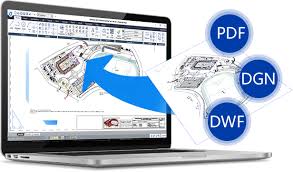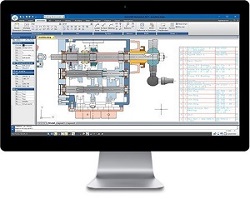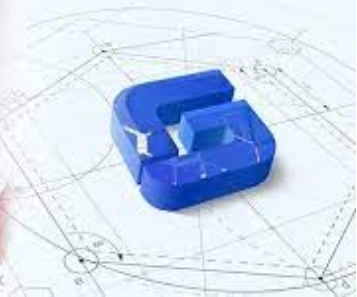Special
The GstarCAD Special page provides you with an introduction to CAD and other software related content.

CAD (Computer-Aided Design) files are digital files used to create, modify, analyze, and optimize designs in a variety of industries such as architecture, engineering, manufacturing, and product design. These files contain detailed drawings and models that can be easily manipulated using CAD software. CAD files come in various formats, with the most common being DWG, DXF, and STL, which are used for different types of design work including 2D drawings, 3D models, and 3D printing.
One of the primary benefits of CAD files is their ability to store precise measurements and complex geometric shapes, making them essential for tasks that require high accuracy, such as mechanical parts, building layouts, and electrical circuits. CAD software like GstarCAD is widely used for creating, editing, and viewing these files. It offers a user-friendly interface and powerful tools for both 2D and 3D design, providing a robust alternative to more expensive software like AutoCAD.
GstarCAD is known for its compatibility with DWG files, which ensures seamless workflow for professionals who need to work with AutoCAD drawings. It also supports a variety of other formats, making it a versatile choice for anyone needing reliable CAD file management and editing. Whether you're designing a simple 2D floor plan or a complex 3D model, CAD files are a crucial part of the design process, and with tools like GstarCAD, accessing and manipulating these files has never been easier.
What are CAD Files?
CAD (Computer-Aided Design) files are digital representations of designs and drawings used in various industries like architecture, engineering, and manufacturing. These files contain precise data about the design's geometry, dimensions, and other details, which can be manipulated and analyzed for accuracy. The most common CAD file formats include DWG, DXF, STL, and IGES, with DWG being widely used in professional CAD applications. CAD files are created using specialized software like GstarCAD, which enables users to draft, edit, and share designs seamlessly.
What Do CAD Files Look Like?
CAD files typically appear as intricate blueprints or 3D models, depending on whether they represent 2D drawings or 3D objects. In 2D CAD drawings, you’ll usually see precise linework representing structures, mechanical parts, or electrical circuits. These drawings are often displayed with various layers for different elements, such as dimensions, annotations, or architectural components. On the other hand, 3D CAD models look like realistic digital representations of physical objects or structures, showing depth, volume, and texture. Advanced CAD software, such as GstarCAD, provides intuitive interfaces where users can toggle between 2D and 3D views to inspect and modify designs in real-time.
How to Open CAD Files?
Opening CAD files depends on the format and the software you're using. For the most popular formats like DWG, DXF, and STL, you will need CAD software like GstarCAD that supports these file types. GstarCAD allows users to open, edit, and save DWG files without compatibility issues, ensuring smooth collaboration with other professionals using AutoCAD or similar programs. To open a CAD file, simply launch the software and use the “Open” or “Import” function, then browse for the file on your system. Alternatively, cloud-based tools or online CAD viewers can be used to view these files if you don't have access to full-fledged CAD software.
How to Convert and Manage Different CAD File Formats?
What Are CAD File Extensions?
CAD file extensions are suffixes added to file names that indicate the specific type of CAD file format being used. These extensions help CAD software identify how to handle the file and what tools to use for opening or editing it. Some of the most common CAD file extensions include:
1)DWG: This is the native file format for AutoCAD and other CAD software. It stores 2D and 3D design data, including vector data, coordinates, and metadata.
2)DXF: The Drawing Exchange Format is used for enabling data interoperability between different CAD programs. It’s commonly used for exchanging files between AutoCAD and other CAD systems.
3)STL: This file format is predominantly used for 3D printing. It represents a 3D model in a triangular mesh format.
4)STEP (.stp): A file format used for 3D product modeling, particularly in manufacturing and engineering.
5)IGES (.igs): A standard format for 3D CAD data exchange, used for both part and assembly data in various industries.
Understanding CAD file extensions ensures that users can easily identify and work with files across different platforms and applications. For example, GstarCAD supports various extensions such as DWG, DXF, and others, enabling seamless file sharing and editing.
How to Convert CAD Files?
Converting CAD files from one format to another is essential for compatibility between different CAD programs or applications. To convert a CAD file, you can use built-in tools in CAD software like GstarCAD, which supports both direct and batch conversion of different file formats. Here's how you can convert CAD files:
Step1 Open the file:
Launch the CAD software (e.g., GstarCAD) and open the CAD file you want to convert.
Step2 Select the format:
Go to the "Save As" or "Export" option in the menu. Select the desired output format (e.g., DXF, PDF, or STL).
Step3 Save:
Click "Save" or "Export" to complete the conversion. If batch conversion is required, use the software’s batch export tool.
Converting CAD files allows users to share and collaborate with different CAD programs without issues. For example, GstarCAD can open and convert AutoCAD DWG files without compatibility concerns, making it a great option for cross-software work.
How to Convert CAD Files to DXF?
DXF (Drawing Exchange Format) is one of the most popular file formats for exchanging CAD data between different programs. If you want to convert a CAD file to DXF format, follow these steps:
Open the file in your CAD software:
Use software like GstarCAD, which supports a wide range of CAD file formats.
Use the "Save As" or "Export" option: Once the file is open, go to the “File” menu, and select “Save As” or “Export”.
Select DXF format:
Choose DXF from the available formats. You can also choose from various DXF versions (e.g., AutoCAD 2013, 2016, etc.) depending on your needs.
Save the file:
After selecting the DXF format, click "Save" to convert the file.
This simple conversion process ensures that your CAD drawings are accessible to a broader range of users and software, making it easier to collaborate with clients or colleagues using different programs.
Can You Convert Sketch Files to CAD?
Yes, you can convert Sketch files (such as those created in SketchUp) to CAD formats. There are several methods to do this, depending on the specific type of Sketch file and CAD software you're using:
Direct Import/Export: Some CAD software like GstarCAD can import SketchUp files directly. You can export the SketchUp file as a DWG or DXF file and open it in GstarCAD for further editing and modification.
Third-party conversion tools: If your CAD software doesn't natively support SketchUp file formats, you can use online converters or third-party software tools that specialize in converting SketchUp files to CAD-compatible formats (like DXF or DWG).
By using the appropriate tools, you can easily convert Sketch files to CAD formats, ensuring that your designs are compatible with a wider range of software and workflows.
Can You Import CAD Files into SketchUp?
Yes, you can import CAD files (primarily DWG and DXF) into SketchUp, but there are a few things to keep in mind to ensure a smooth import process:
1)File Compatibility: SketchUp supports importing DWG and DXF files, which are common CAD file formats. Make sure your CAD file is in one of these formats.
2)Import Process: In SketchUp, go to File > Import, select your CAD file, and ensure you choose the correct file type (DWG or DXF). After selecting the file, click Open to import it into your SketchUp project.
3)Adjust Settings: After importing, you may need to adjust scale, units, or layers to match your project needs, as CAD files sometimes don’t align perfectly with SketchUp's model.
SketchUp is widely used in architectural and interior design projects, and the ability to import CAD files expands its usability by enabling professionals to incorporate more detailed technical data into their designs.
How to Convert New CAD Files to Older Versions?
Converting newer CAD files to older versions is often necessary when working with legacy systems or software that doesn’t support the latest file formats. To convert CAD files to older versions:
Use "Save As" or "Export": Most CAD software, including GstarCAD, allows users to save files in different versions. Open the newer file, then go to File > Save As and choose an older version of the CAD format (e.g., AutoCAD 2010 or 2013).
Check compatibility: Some advanced features in newer CAD files may not be supported in older versions, so be mindful of potential data loss or reduced functionality when converting.
Use Compatibility Tools: Some CAD applications provide compatibility tools or options that allow for more flexible conversions, preserving the file’s integrity when downgrading to older versions.
Converting CAD files to older versions ensures backward compatibility, allowing collaboration with teams using older software versions or legacy systems. GstarCAD provides an efficient way to save and convert files to different versions, helping to avoid compatibility issues.
CAD File related Q&A
Where Can You Download Free CAD Files?
You can download free CAD files from various online platforms that offer open-source and free-to-use resources for CAD designs. These files are available in different formats, such as DWG, DXF, and STL, and can be used in a wide range of CAD software, including GstarCAD. Here are some of the most popular websites to download free CAD files:
GrabCAD: A community-driven platform offering thousands of free CAD models and files, including 3D and 2D designs.
Thingiverse: A great resource for 3D printing CAD files, where you can find a range of free designs.
FreeCAD Library: A collection of CAD files that can be used in FreeCAD and other compatible CAD software.
CADBlocksFree: Offers a wide range of free 2D and 3D CAD blocks for download in DWG and DXF formats.
These websites allow users to download and use CAD files for various projects. If you're using GstarCAD, it fully supports DWG and DXF files, so you can open and edit downloaded CAD files with ease.
Where Can You Find Free 2D CAD Files?
Free 2D CAD files are widely available for download on various platforms. These files are typically used for architectural plans, mechanical components, electrical diagrams, and other design purposes. Here are some sources where you can find free 2D CAD files:
CADBlocksFree: Offers a large library of 2D CAD blocks, including architectural and engineering designs, available in DWG and DXF formats.
DWGmodels: A resource for free 2D and 3D DWG files, especially for architectural and interior design projects.
Bibliocad: A platform with a variety of free 2D CAD files related to architecture, engineering, and design.
These 2D CAD files can be used in various CAD software tools. If you are using GstarCAD, you can easily open these files, edit them, and use them in your projects, as GstarCAD natively supports DWG and DXF formats.
Where Can You Find Free 3D CAD Files?
Free 3D CAD files are often used for 3D printing, product design, prototyping, and engineering purposes. Several online platforms provide free access to these 3D models in various file formats such as STL, STEP, and IGES. Some popular sources for free 3D CAD files include:
Thingiverse: A popular site for 3D printing enthusiasts, offering a wide range of free 3D models that can be downloaded in STL format.
GrabCAD: A platform with a large collection of free 3D models, ranging from mechanical parts to complex assemblies, available for download in formats like STL, STEP, and IGES.
MyMiniFactory: A website dedicated to free 3D printable designs, mostly for use with 3D printers, but also supports CAD models in other formats.
If you use GstarCAD, it is possible to work with 3D CAD files, as it supports both 2D and 3D file formats like DWG and STL. You can import, modify, and export 3D CAD files without losing data integrity.

